Student creative
Lisa Moro was one of three Student Creatives in the academic year 2021 / 2022. The aim of the initiative was to offer all students at the AUB an opportunity to create work inspired by the MoDiP collection. This could be in any discipline with any creative outcome from physical art work to film or acting production. The MoDiP collection and / or the museum's practices had to be at the heart of the project and the work needed to be displayed either physically or digitally after a period of 20 weeks. A small bursary was provided to assist with material costs during the project and the remainder was paid on completion.
The resident was expected to keep the MoDiP team updated with progress reports on a regular basis either through email or face-to-face. They were also expected to write three blog posts during the process which follow below. The project not only helped MoDiP work closely with an AUB student, it gave the student a live brief and an opportunity to demonstrate their professional practice beyond their academic requirements.
Lisa's first blog post
My name is Lisa Moro and I am in my final year of the BA Fine Art at AUB and am excited to have been chosen for the MoDiP Student Creative.
Over the last few months, I have been exploring making work using Augmented Reality and my submission to MoDiP was to make work using AR as a medium.
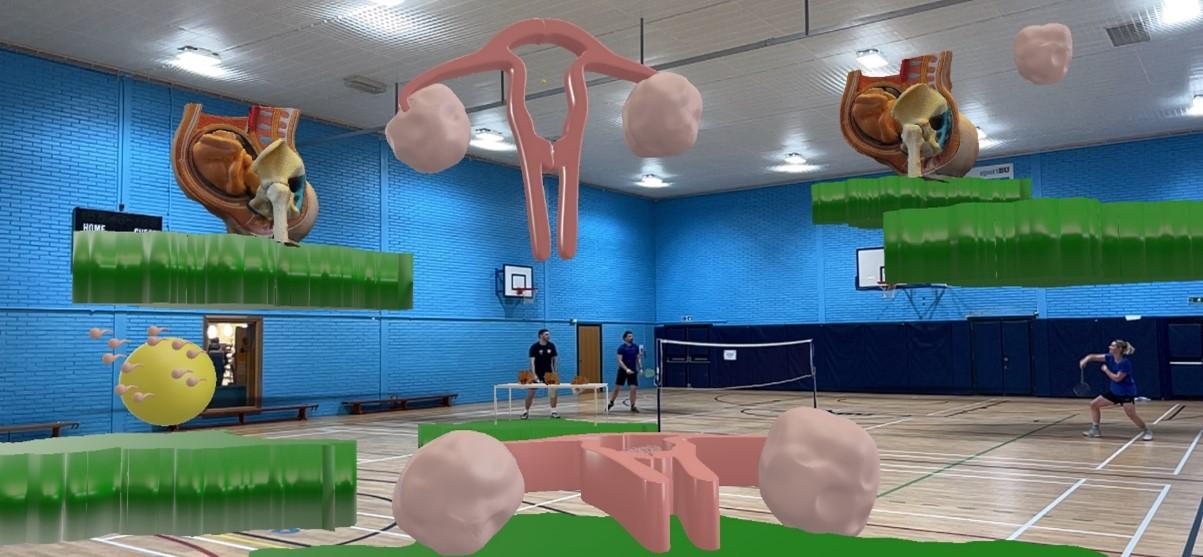
I was particularly interested in bringing items out of the museum environment and placing them in real world situations.
My previous work has had themes around body parts and domesticity and machines, and with this in mind I have been searching the catalogue to find items which are labour saving devices to work with. Examples of those which I will be looking to use are:
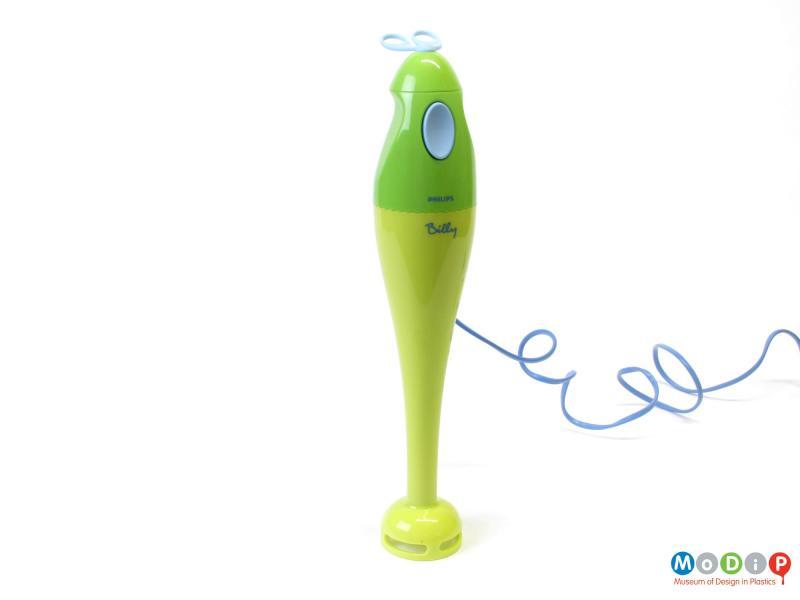
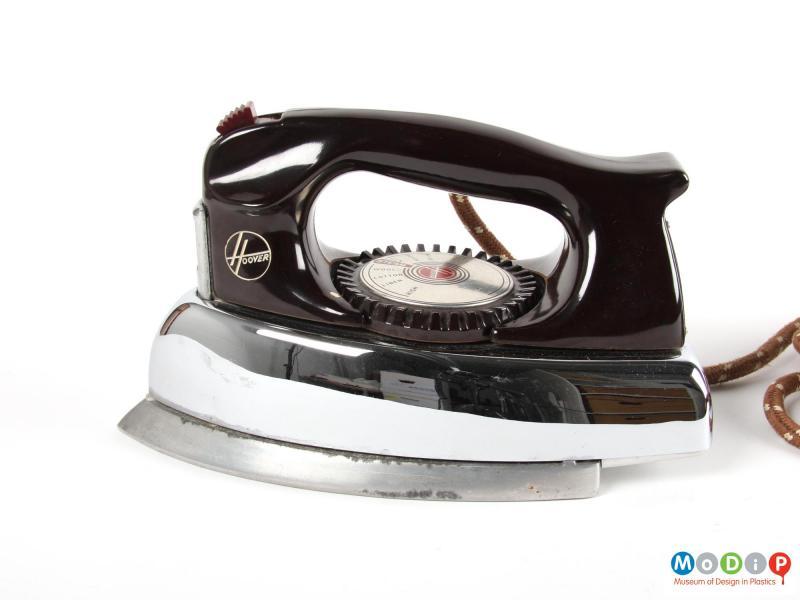
For this project I have also been on a steep learning curve extending my skills using 3D and AR software and I have had help from AUB innovation https://aub.ac.uk/industry to explore ways to recreate the items in 3D and am pleased to say I now have this aspect nailed!
As part of my research into artists using AR I have visited some exhibitions which are currently running, The Seeing the Invisible http://seeingtheinvisible.art exhibition at the Eden Project has work from 12 Artists. Visiting the exhibition gave me a chance to see a range of work and how the technology works in practice and also to consider the visitor experience and signage.
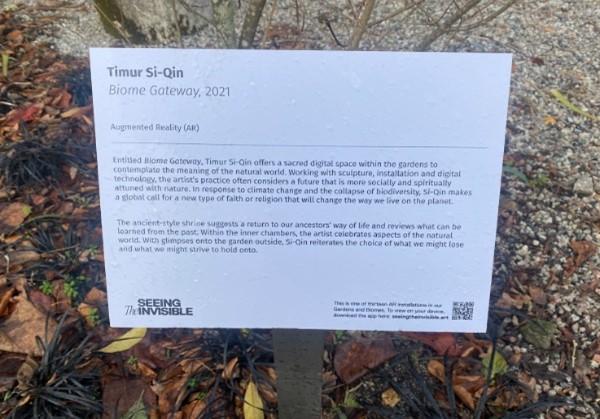
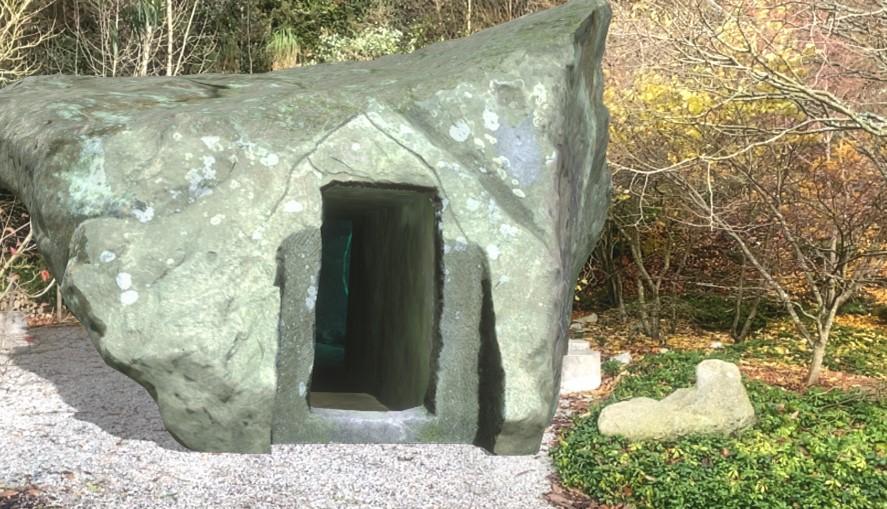
My next step will be to digitise the items I will be working with and explore ways to manipulate them. I do not have an end result in my mind yet so am excited to see what emerges over the next few weeks.
Lisa's second blog post
This is my second blog for this project, and it is interesting to look back and see how my ideas have developed over the months. I was initially thinking of something which would play with objects in a novel way, then started to think about more specifically domestic labour-saving items and how I could play with the objects and their uses.
I have collected lots of material and have tried thinking about different ways to represent the different objects and what they represent.
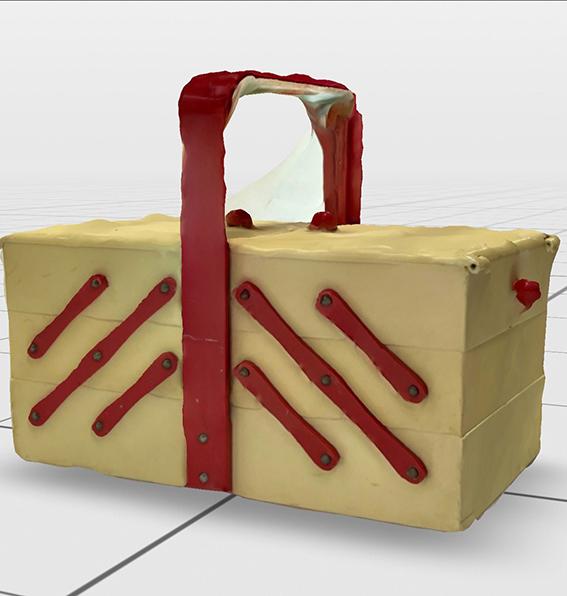
I have also noticed that with digital scanning a different view becomes available, as we can see items from the inside.
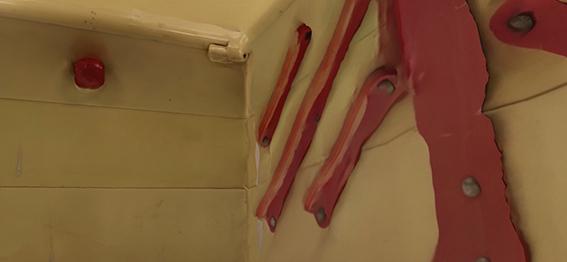
This idea has led me to start to think about being able to view the inner workings of some objects. Often when viewing an interesting or classic design of an object the use in practice can be overlooked, I have with this in mind been gathering scenes of people preparing for or using the items- doing the background work.
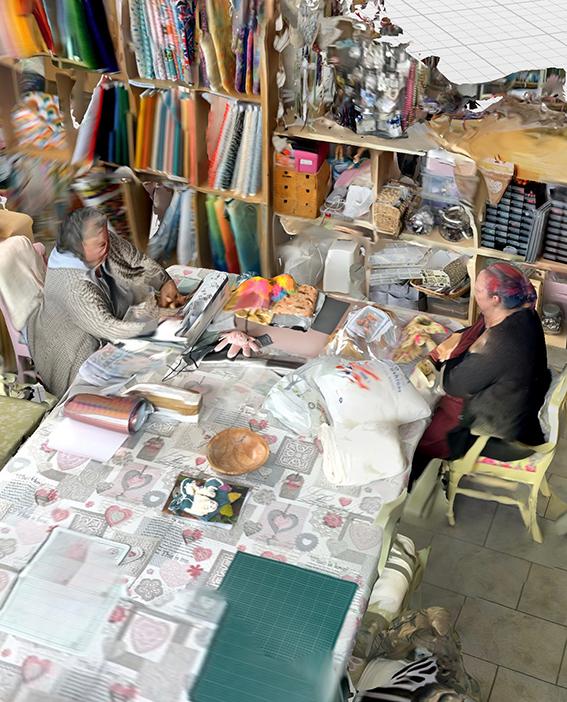
An example here is in relation to the sewing box where I have taken a 3D scan of a scene where two women are doing their craft.
As I work towards my final iteration, I anticipate that I will create three such scenes where the inner workings of an object are revealed in life size proportions.
Lisa's final blog post
Welcome to my final blog post where I am pleased to show my final outcome, ‘Hidden Workings’ for this project working with the MoDiP collection.
I wanted to continue my previous practice using augmented reality for the work and have focused on three items from the collection. I chose these on the basis of my ability to produce a 3D scan of the object and the potential for there to be a further story about their use.
The three objects I ultimately chose to work with are a sewing box, an iron, and a bento box.
I have an interest in domestic work and its status in society as women’s work, and I was interested in contrasting the value of the designed object with the work that the object is facilitating.
For each object I have created a related scene which depicts the less recognised hidden work which is vital to the existence of that product.
Each of these scenes have been placed inside the relating product so the scene becomes it’s ‘inner working’. This provides an immediate novelty aspect to the work which I intend to make the work accessible but with deeper meaning.
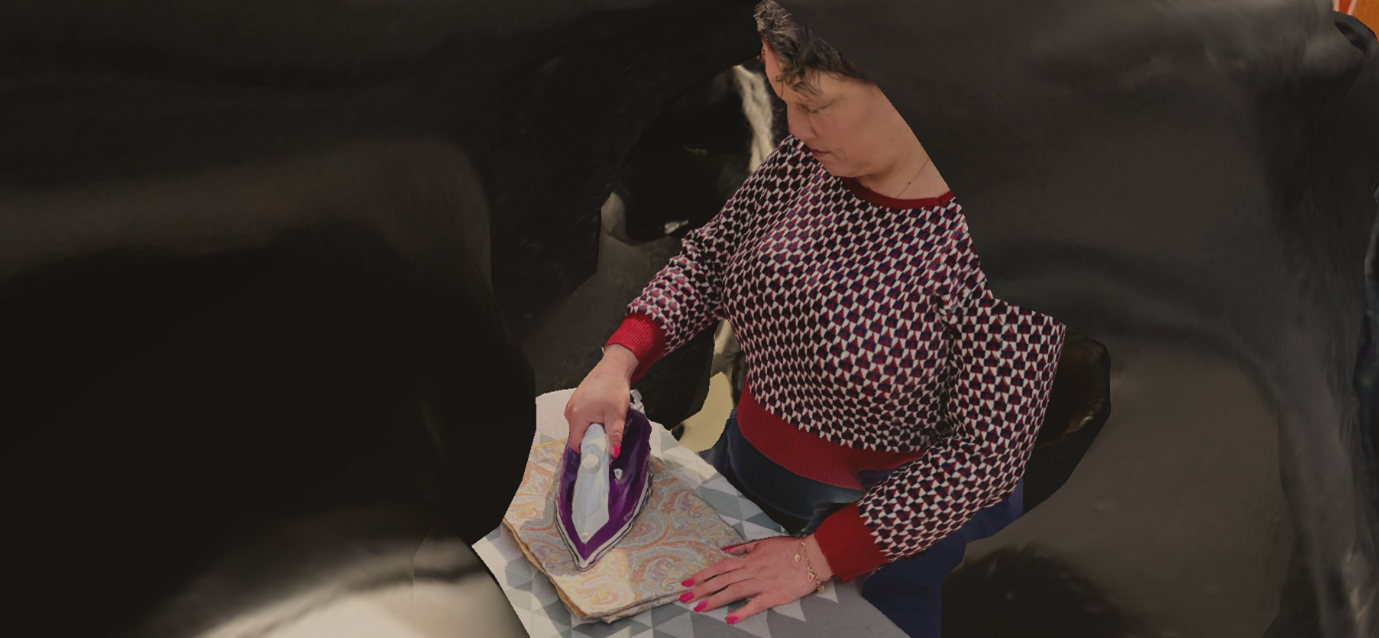
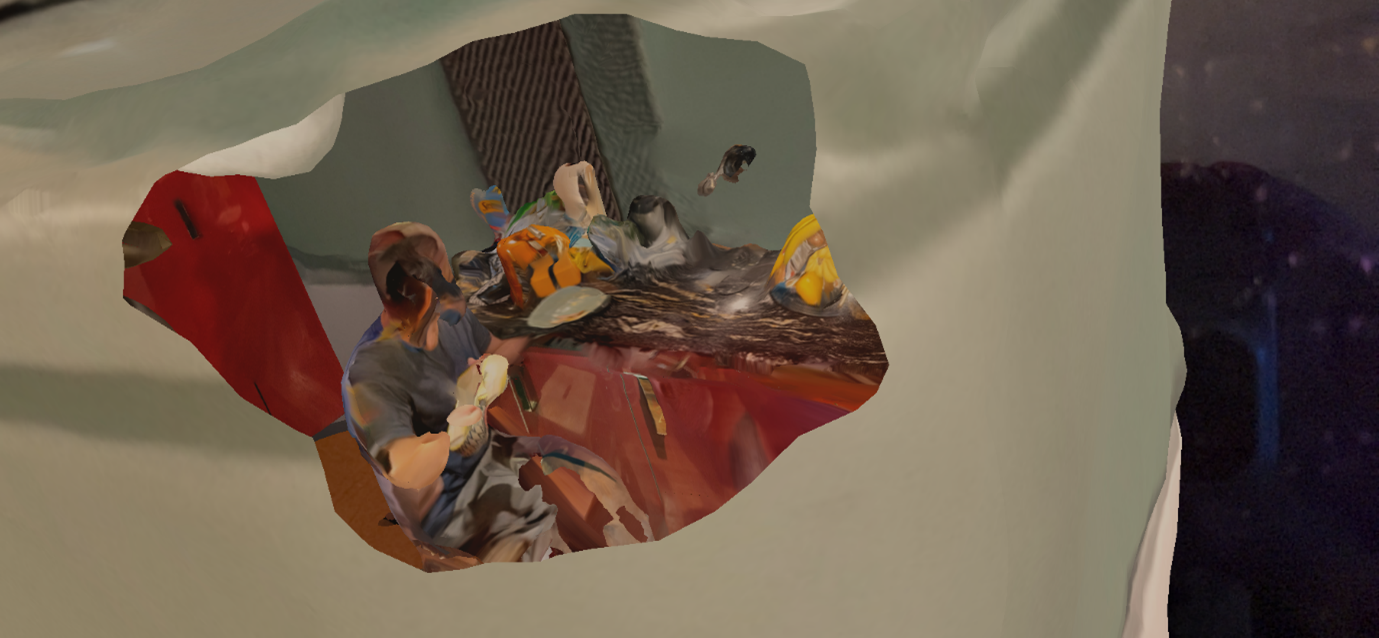
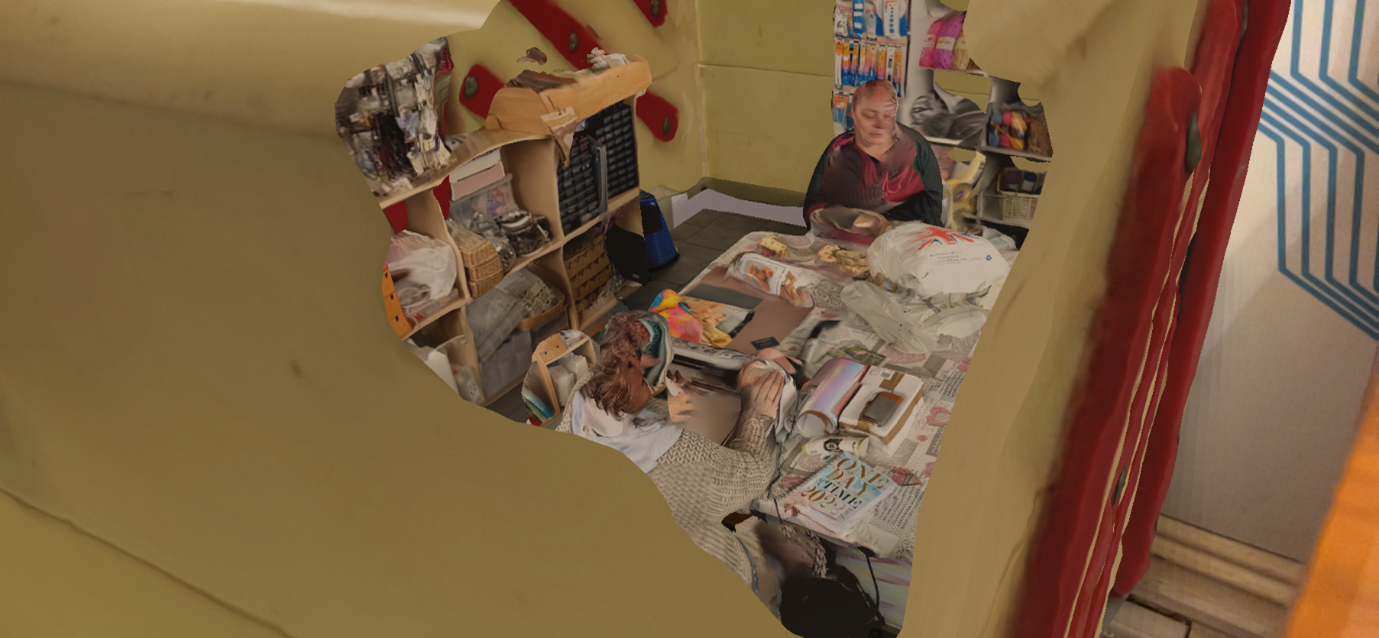
My installation can be seen via an Apple device - an iPhone or iPad, by scanning the QR code.
I have made a small version of this installation where the collection items are close to life size, this indoor version can be viewed on a table top.
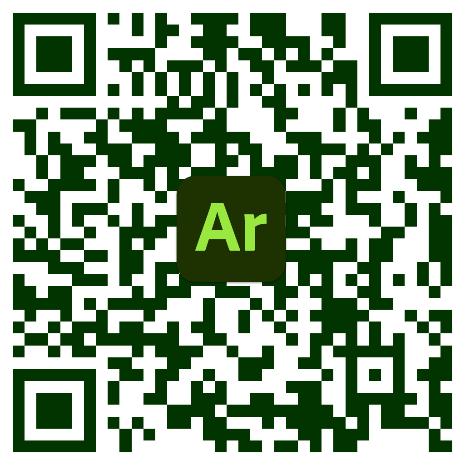
In addition I have made an outside version where the scenes are life-sized instead and the collection items are huge.
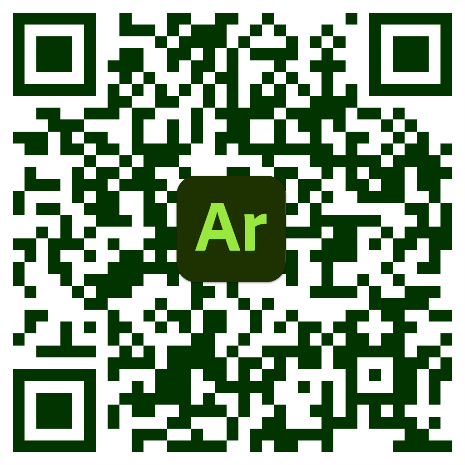
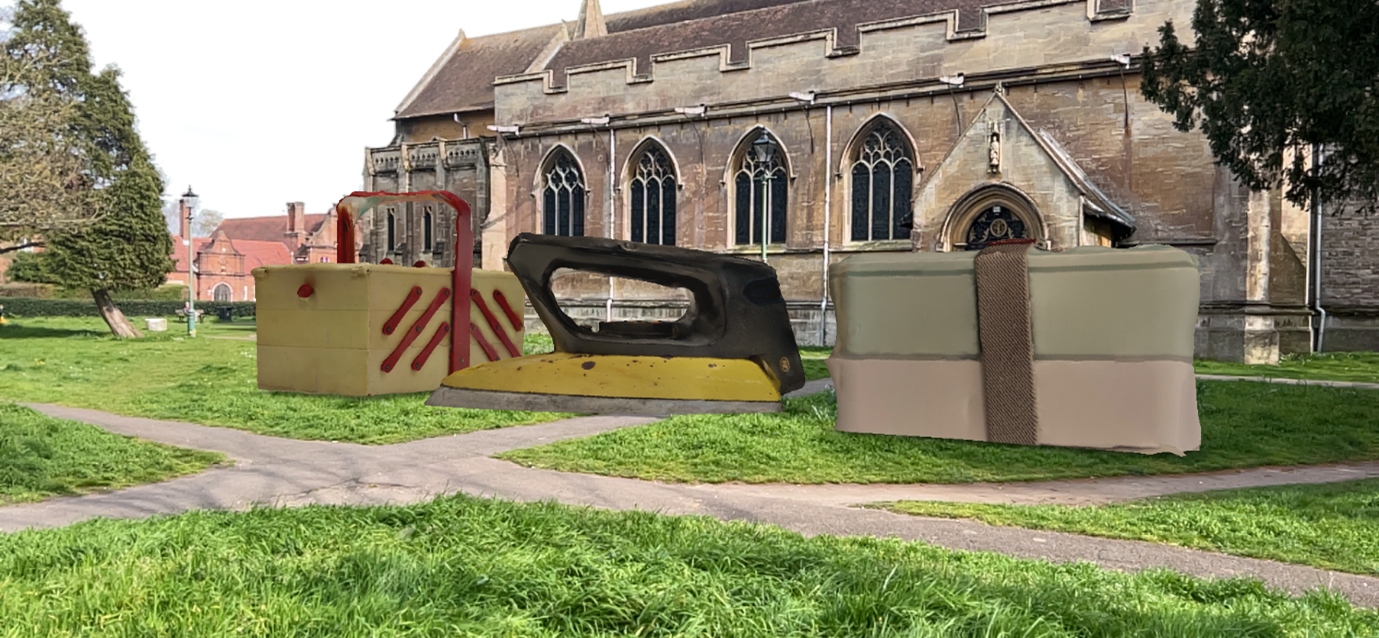
You can see the objects I used for this project on display in the cases outside the museum until 13th June 2022.
